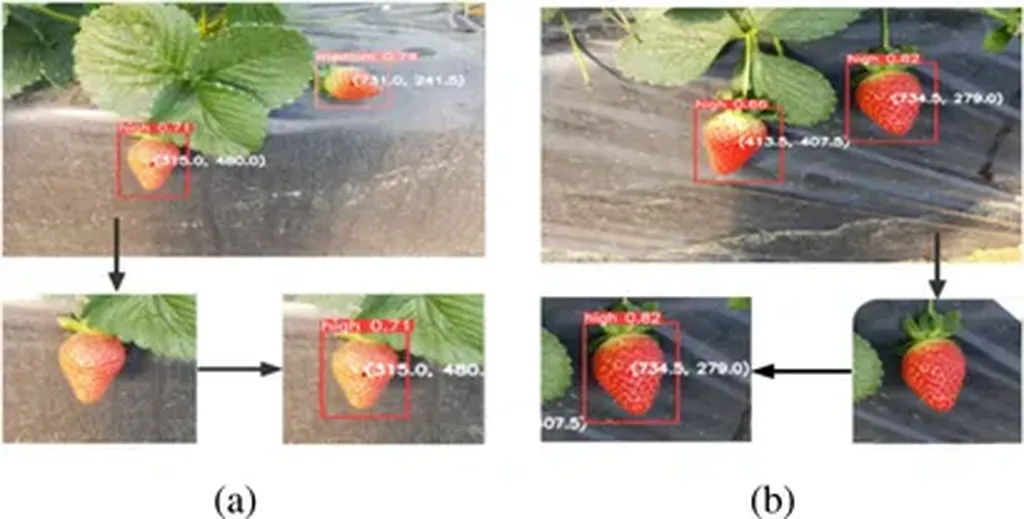In the heart of China’s Yunnan province, a groundbreaking study led by Hua Li from the College of Big Data at Yunnan Agricultural University is set to revolutionize strawberry disease detection, offering a beacon of hope for farmers and the agricultural sector at large. The research, published in the journal *Applied Sciences* (translated as “Applied Sciences”), introduces an enhanced YOLOv8 algorithm tailored for precise strawberry disease identification, even in the most complex field conditions.
Strawberries, a vital global economic crop, face significant threats from diseases that can decimate yields and compromise quality. Traditional detection methods, relying on manual observation or conventional machine learning algorithms, often fall short due to their inefficiency and high false detection rates. Moreover, these methods struggle with tiny disease spots and complex environments, leaving farmers in a lurch.
Enter Li’s innovative approach, which leverages a two-stage optimization of the YOLOv8 model. The first stage introduces an ultra-small scale detection head (32 × 32) to capture early, tiny disease spots that often go unnoticed. “This enhancement allows us to detect diseases at their nascent stages, significantly improving our ability to prevent yield loss,” Li explains.
The second stage integrates the convolution and attention fusion module (CAFM), which combines local feature extraction with global information focusing. This synergy boosts the model’s robustness in complex field scenes, ensuring accurate detection even amidst the chaos of real-world farming conditions.
The results are nothing short of impressive. The improved model boasts an mAP50 of 0.96, outperforming mainstream algorithms like YOLOv5 and Faster R-CNN in both recall and F1 score. This means farmers can now rely on a tool that is not only highly accurate but also adaptable to the intricacies of their fields.
To make this technology accessible, Li and his team developed an interactive system based on the PyQT5 framework. This system processes images, videos, and camera inputs in real-time, providing farmers with visualized bounding boxes and category labels. “Our goal was to create a lightweight, low-threshold tool that farmers can easily integrate into their daily routines,” Li states.
The implications of this research extend far beyond the strawberry fields. It sets a precedent for the application of deep learning in agricultural scenarios, paving the way for precision agriculture technologies. As the world grapples with the challenges of climate change and food security, such innovations become increasingly crucial.
Li’s work is a testament to the power of technology in transforming traditional industries. By enhancing disease detection capabilities, farmers can now make more informed decisions, ultimately leading to improved yields and quality. This research not only verifies the effectiveness of the improved algorithm but also provides a practical reference for future engineering applications in agriculture.
As we look to the future, the integration of advanced technologies like Li’s enhanced YOLOv8 algorithm could very well shape the next agricultural revolution. By embracing these innovations, the agricultural sector can strive towards greater efficiency, sustainability, and productivity, ensuring a bountiful future for all.

